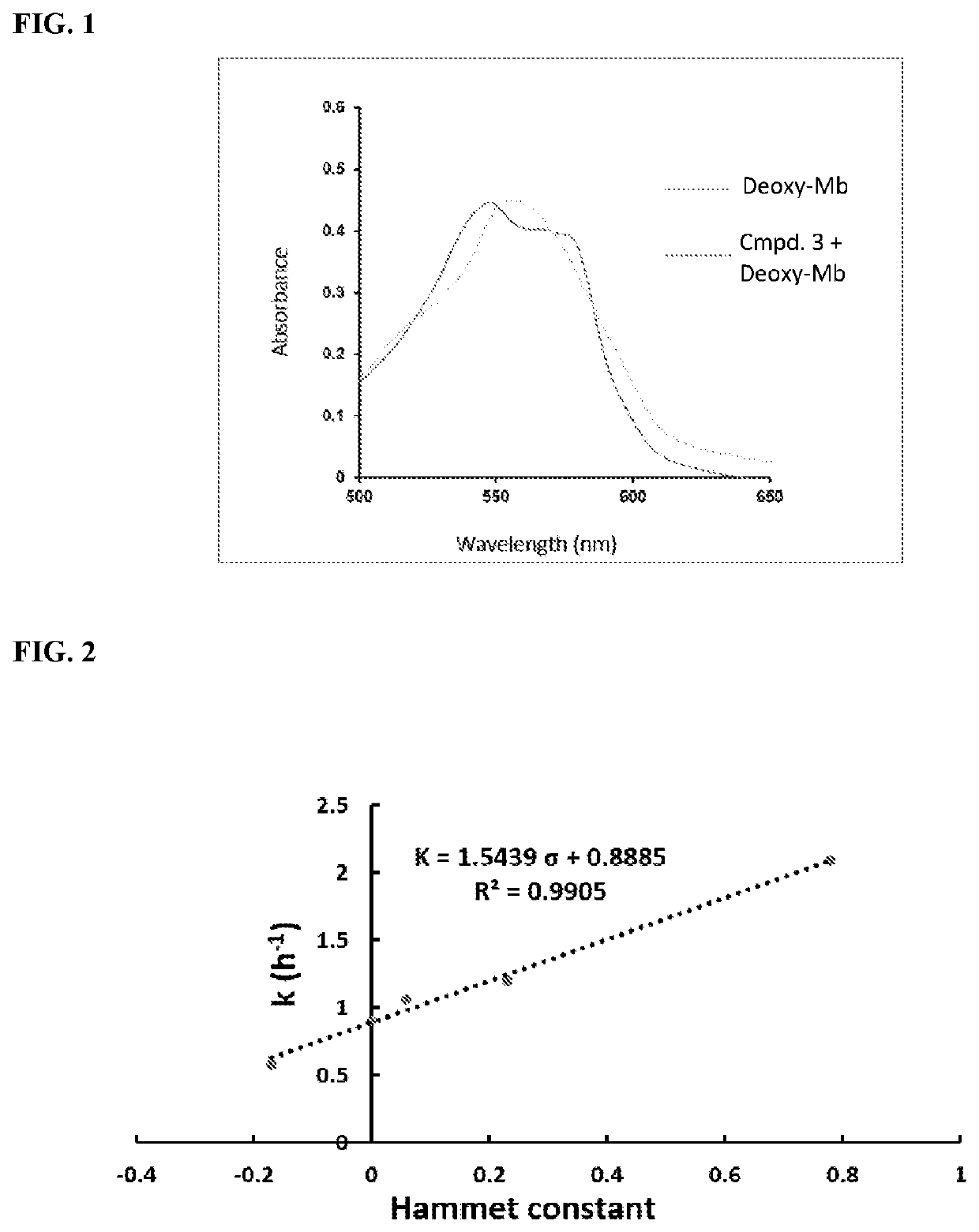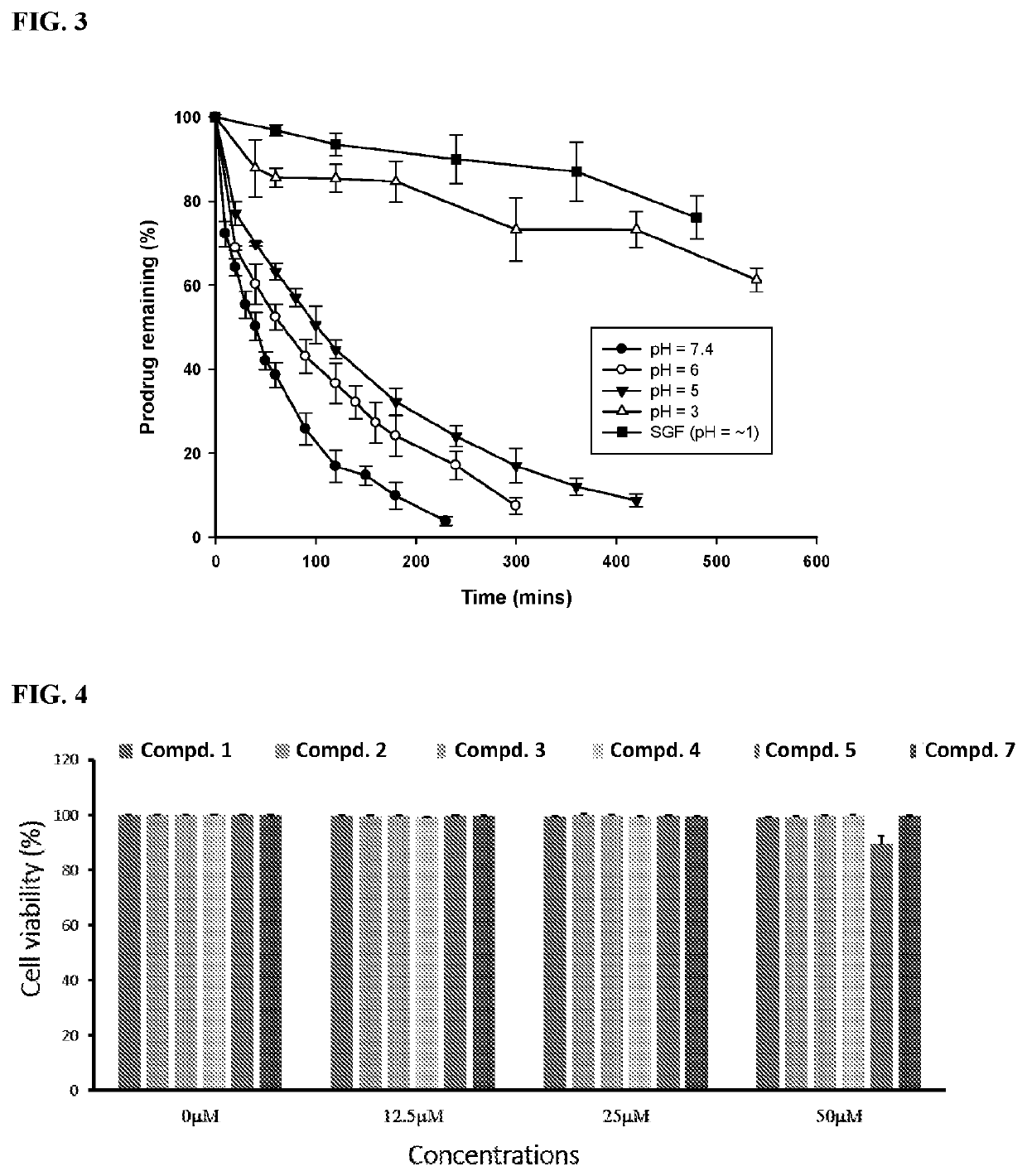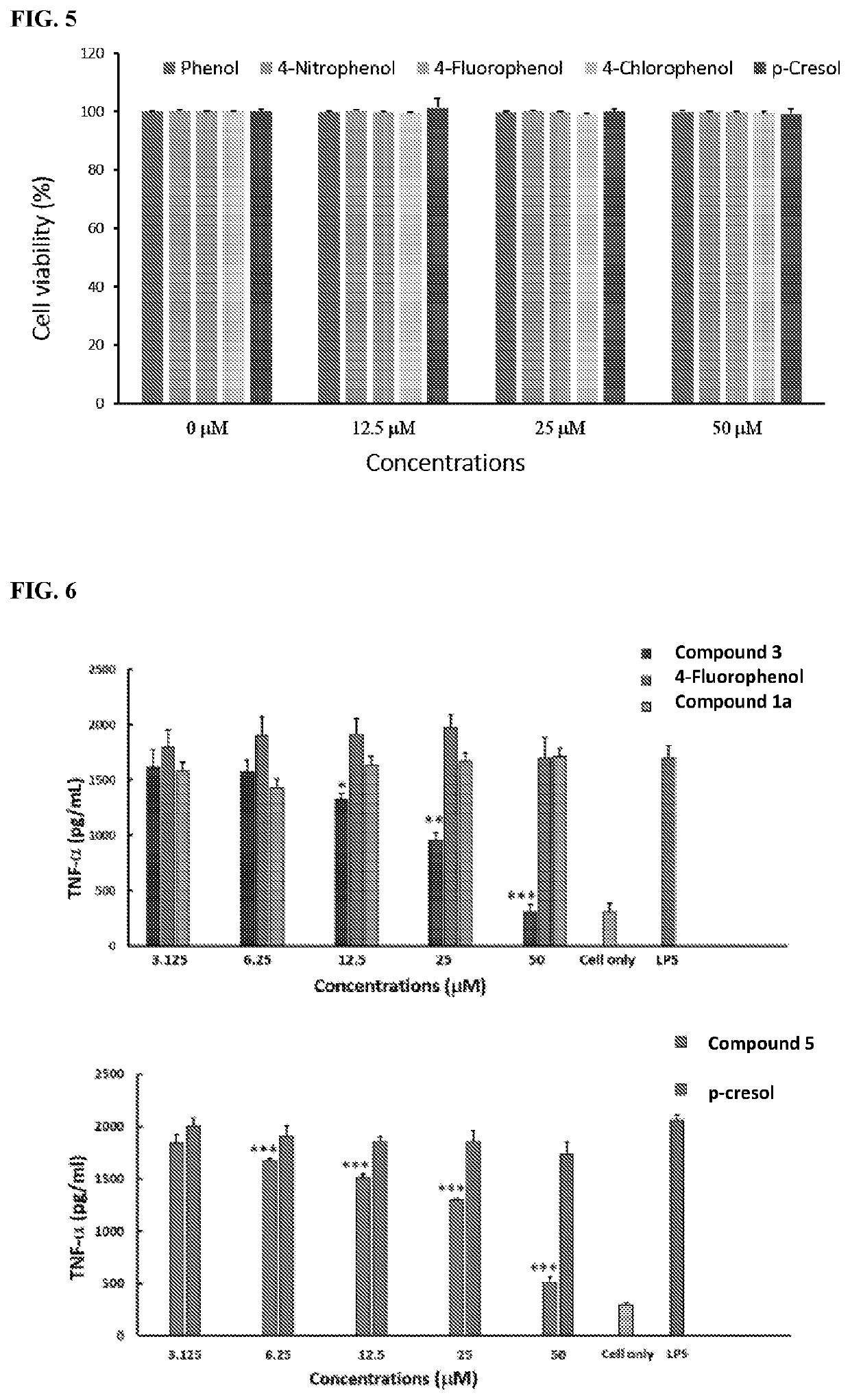Carbon monoxide-releasing molecules triggered by physiological stimuli
a carbon monoxide and physiological stimuli technology, applied in the field of carbon monoxide-releasing molecules triggered by physiological stimuli, can solve the problem of severely under-explored ros-sensitive co-displacemen
- Summary
- Abstract
- Description
- Claims
- Application Information
AI Technical Summary
Benefits of technology
Problems solved by technology
Method used
Image
Examples
example 1
of pH-Sensitive CO Releasing Compounds
[0206]pH-sensitive CO prodrugs 1-6 (Scheme 4) were designed and synthesized. An aldehyde group was incorporated into the compounds for its strong electron withdrawing ability. Despite being very good leaving groups, halides were avoided to minimize their alkylation capacity and issues related to hydrogen halides. As a result, substituted phenols were chosen to achieve a balance between leaving ability and reactivity.
[0207]As shown in Scheme 4, CO prodrugs 1-6 were readily synthesized in 4 steps. Specifically, compounds 1.4-6.4, which were obtained according to a reported procedure, were reduced using DIBAL to yield the corresponding alcohol 1.3-6.3. The hydroxyl group in compounds 1.3-6.3 was protected with MOMCl to form 1.2-6.2 before the DA reaction. Compounds 1.1-6.1 were successfully obtained primarily as an endo product, as confirmed by heteronuclear multiple-bond correlation spectroscopy (O═C—C—C-Ha), after the DA reaction and deprotection...
example 2
on of pH-Insensitive Control Compounds
[0245]
[0246]A solution of 1, 2, 3, 4, 5, or 6 (10 mg) in CH3CN / PBS (10 mL, 2:1) was incubated at 37° C. overnight. Then the reaction mixture was extracted with ethyl acetate (3×30 mL). The combine organic layer was washed with 5% NaOH and brine, and was dried over anhydrous Na2SO4. After filtration and concentration, the obtained residue was purified on a silica gel column to afford compound 1a as a white solid (yield: 90%). 1H NMR (CDCl3): δ 10.42 (s, 1H), 7.79 (s, 1H), 7.19-7.11 (m, 6H), 6.95-6.92 (m, 4H), 2.40 (s, 3H), 2.16 (s, 3H). 13C NMR (CDCl3): δ 192.9, 147.3, 143.5, 139.9, 139.6, 136.3, 134.3, 133.3, 131.8, 130.1, 129.2, 127.7, 127.6, 126.4, 126.3, 20.7, 16.3. HRMS (ESI)+ calculated for C21H18ONa [M+Na]+: m / z 309.1255, found 309.1243.
[0247]A solution of 2,5-dimethyl-3,4-diphenylcyclopenta-2,4-dien-1-one and 3-phenoxyprop-2-en-1-ol in toluene was heated under reflux for 2 h. Then the reaction mixture was dried directly under vacuum, and ...
example 3
of pH-Sensitive CO Releasing Compounds
[0248]CO prodrugs with the leaving group being a phenylsulfonyl group were synthesized according to Scheme 7. Regents and conditions: a) H3BO3, NBu4HSO4, THF / H2O, r.t.; b) DIBAL, CH2Cl2, −78° C.; c) Dess-Martin periodinane (DMP), CH2Cl2, 0° C.; d) toluene, reflux.
[0249]Preparation of compound 7.3. A solution of sodium salt of benzenesulfonic acid (4.56 g, 27.8 mmol), H3BO3 (2.58 g, 41.7 mmol), NBu4HSO4 (1.4 g, 4.2 mmol) and methyl propiolate (2.45 g, 29.2 mmol) in THF / H2O (50 / 20 mL) was stirred at room temperature for 48 h. Then the reaction mixture was extracted with ethyl acetate (3×40 mL), and the combined organic layer was washed with water and brine successively, and was dried over anhydrous Na2SO4. After filtration and concentration, the obtained residue was purified on a silica gel column to afford the final product as a colorless oil, which was solidified after overnight at room temperature (2.5 g, yield: 40%). 1H NMR (CDCl3) δ 8.02 (d, ...
PUM
| Property | Measurement | Unit |
|---|---|---|
| temperature | aaaaa | aaaaa |
| temperature | aaaaa | aaaaa |
| temperature | aaaaa | aaaaa |
Abstract
Description
Claims
Application Information
 Login to View More
Login to View More - R&D
- Intellectual Property
- Life Sciences
- Materials
- Tech Scout
- Unparalleled Data Quality
- Higher Quality Content
- 60% Fewer Hallucinations
Browse by: Latest US Patents, China's latest patents, Technical Efficacy Thesaurus, Application Domain, Technology Topic, Popular Technical Reports.
© 2025 PatSnap. All rights reserved.Legal|Privacy policy|Modern Slavery Act Transparency Statement|Sitemap|About US| Contact US: help@patsnap.com



